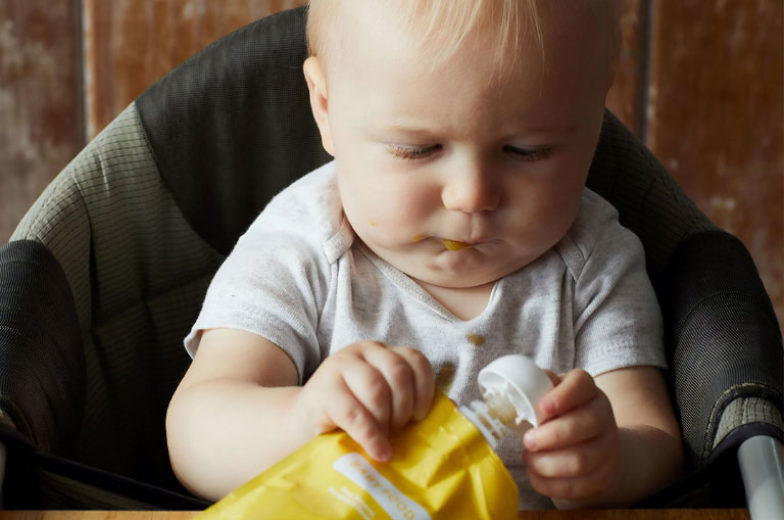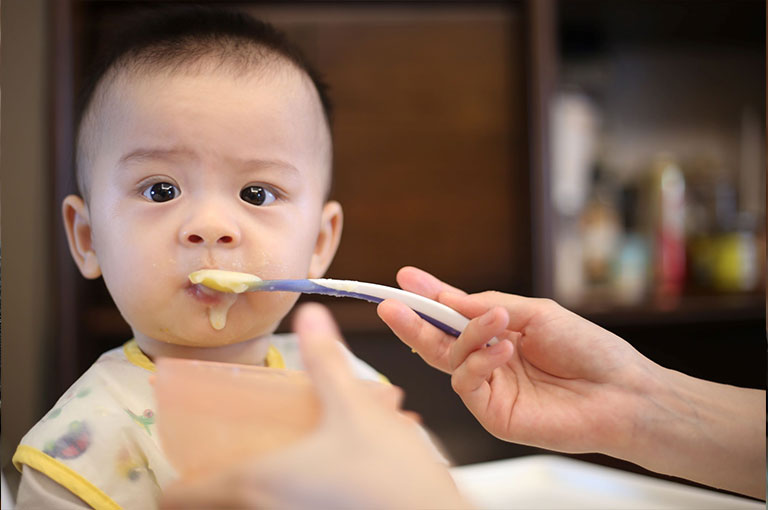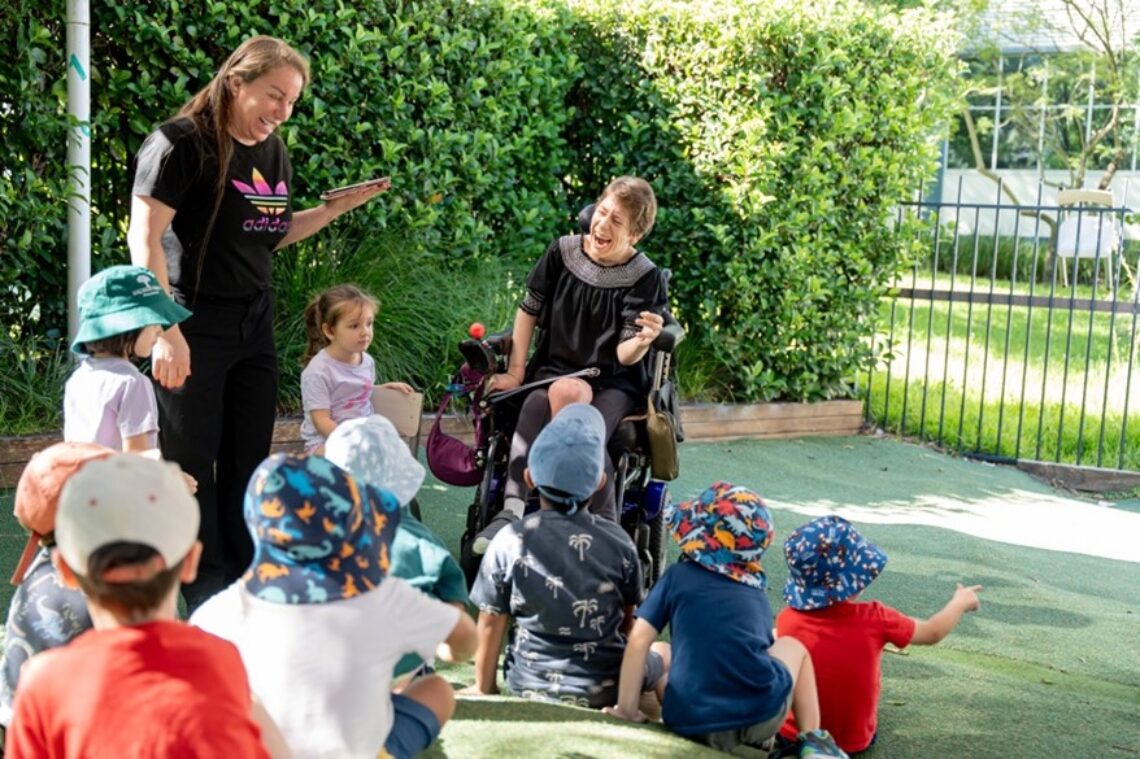A Guide to Introducing Solids


Knowing when to introduce solids to your baby’s diet and what particular foods to start with can be confusing. If you’re looking for reliable, science-based advice, Alex and Anna from The Biting Truth have compiled the latest guidelines around introducing solids.
What’s the go with Breastfeeding?
It is ideal to exclusively breastfeed for the first six months of a baby’s life. This means no other foods or drinks. Breast milk provides all the essential nutrients and energy needed for the first months of a baby’s life. Breastfeeding also helps to protect babies against infection, obesity and chronic diseases later on in life. It has benefits for mum as well – such as helping the return to pre-pregnancy weight.
Of course, there are some circumstances where mothers may not be able to breastfeed, or may choose not to. In this case infant formula should be exclusively used for feeding until six months old.
When to Start Introducing Solids
Determining when your baby will be ready to start on solids varies from child to child. This is why the World Health Organisation and NHMRC recommend starting at “around 6 months of age”. Although there is some variability here, the introduction of solids is not recommended before 4 months. This is because babies are not developmentally ready before then. Their digestive systems, kidneys and immune systems are not mature enough to process solids.
Try not to compare your baby to others, and consider these signs that might indicate your baby is ready for solids:
- They are still hungry after their usual amount of milk
- They are interested in your food e.g. they are reaching out for it
- Your baby has good neck and head control
- Your baby is able to sit upright when supported
First Foods
The first foods to introduce to your child’s diet should be rich sources of iron, such as pureed red meat, chicken, fish, legumes and iron-fortified rice cereals. Following this, there isn’t a specific order that foods need to be introduced. You can then look to introduce a range of vegetables, fruits and foods from the other five food groups.
It is a good idea to only introduce one food at a time over the space of a couple of days. This will allow your baby to become accustomed to the new food. It can also help you to identify any potential allergies to certain foods.
Colours and Flavours
We recommend introducing foods with a wide variety of colours and flavours before the age of 12 months. This will help your child to accept a wider range of foods when they are older. Don’t worry if your baby refuses new foods, that’s normal. Babies need to be offered new foods several times before they learn to enjoy them.
Cow’s milk products can be introduced, including full-fat yoghurt and cheese, but cow’s milk shouldn’t be given as the main drink until after 12 months. From 12 to 24 months, babies should enjoy full cream cow’s milk. After 24 months both low fat and full fat dairy options are considered healthy options.
Vegetarian Diets
If your family is following a vegetarian diet, the quality of your diet is all the more important. Iron is not the only nutrient at risk in a vegetarian diet. A well-planned diet will ensure your child receives all the nutrients they need to grow, develop and stay healthy. Include a wide variety of foods such as legumes (e.g. baked beans, lentils), fruit, vegetables, ground nuts and seeds, soy products, wholegrain breads and cereals. An iron supplement may also be necessary but should only be given as advised by your doctor or dietitian.
Foods to Avoid
There are certain foods that shouldn’t be introduced to children from an early age due to choking hazards or disease risk. These foods include:
- Honey: Don’t offer to children under 12 months due to risk of infant botulism
- Cow’s, goat’s and soy milk: Introduce these milks after 12 months as they are low in iron and have high concentrations of protein, sodium and calcium which may stress a baby’s kidneys as they are not yet fully developed
- Dairy: Offer only full fat dairy (not reduced fat) until 2 years of age in order to meet your baby’s higher energy requirements
- Whole nuts and seeds: Wait until your child is around 3 years of age to offer these foods as they can be a choking hazard. You can offer nut pastes or nut butters from an earlier age.
- Unpasteurised milk, tea, coffee and sugar-sweetened drinks: These beverages are not appropriate drinks for children at any age due to their caffeinated or sugar content.
Progression of Textures
When starting out, it is recommended to offer your baby pureed food without lumps. Once they reach the age of 7-8 months you can start to progress to lumpier textures. This might include well cooked rice or iron enriched baby cereals, cooked and pureed red meat, chicken, pork, tofu and legumes. Progressing with the lumpiness of foods is important to help your baby practice the chewing motion using their gums.
From around the age of 12 months, babies can be offered similar foods and textures as enjoyed by the rest of the family (except for foods that may be a choking hazard).

How Much to Feed Your Baby?
Every baby is going to be different, so try to be guided by your baby as much as possible. Always allow infants to eat to satisfy their appetites. Do not push them to take more mouthfuls if they have indicated they have had enough. It is important not to push a child to overeat or make them finish what is in the bowl as they need to recognise their own fullness and satiety cues.
We recommend these quantities as a general guide:
- Around 6 months: Start with 1-2 teaspoons in one meal per day for 2-3 weeks then build up to 2-4 tablespoons over three meals per day.
- 8 months: 2 tablespoons to ½ cup (build up to 3 times per day)
- 9 months: 3 meals a day with some snacks (about 1 ½ cups at each meal)
- 12 months: 3 meals a day and snacks (this is dependent on age, growth and activity levels)
Baby Lead Weaning
Baby led weaning is an alternative approach used for introduction of solids which places a focus on self-feeding rather than spoon-feeding or purees. This feeding strategy encourages your baby to explore, handle and eat the food at their own pace.
Baby led weaning has been shown to have some really positive benefits for babies. Research suggests this approach may promote good eating behaviours both in the short term and also later in life, with greater awareness of hunger cues and fullness, which has been linked to lower likelihood of childhood obesity. This approach also promotes the acceptance of a wider variety of foods.
Baby lead weaning involves offering baby-sized pieces of regular foods, without using bowls or spoons. Parents pick which foods to offer, when to offer them and in which form to offer them to help their baby to feed themselves. In turn, the baby picks what, how much and how quickly to eat. Food should be firm enough to hold, soft enough to chew and avoid any choking hazards. Some appropriate starting foods include avocado, banana, beans, ground meat, ground nuts and seeds, lentils, oatmeal, salmon, steamed carrots or baked, skinless potatoes.
What About Allergies?
Australian children have the highest rate of food allergy in the world. Up to 1 in 10 babies and 2 in 10 school-aged children have a proven food allergy. The most common food allergies are the nine main food proteins: cow’s milk, soy, egg, wheat, peanut, tree nuts, sesame, fish and seafood. Egg and peanut allergies are the most common in infants and toddlers.
For more great reading see Diet & Asthma – What’s The Link?
Only About Children can help your child to grow, make friends and explore the world.
Only About Children can help your child to grow, make friends and explore the world.
Related Reads


Bec Celebrates 10 Years Working In Her Dream Job At OAC Concord
Rebecca Donatiello (Bec) celebrates 10 years working and learning at Only About Children Concord.

Choosing The Right Preschool/Kindergarten For Your Child
Choosing the right Preschool/Kindergarten for you child can be a daunting task. When exploring the ideal preschool choices for your child, there is no need to navigate blindly. Simply by asking the right questions, you can find the perfect match.
